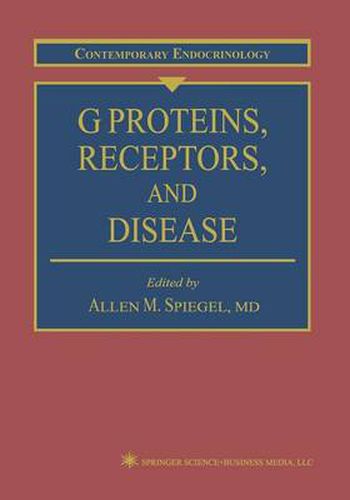Readings Newsletter
Become a Readings Member to make your shopping experience even easier.
Sign in or sign up for free!
You’re not far away from qualifying for FREE standard shipping within Australia
You’ve qualified for FREE standard shipping within Australia
The cart is loading…






This title is printed to order. This book may have been self-published. If so, we cannot guarantee the quality of the content. In the main most books will have gone through the editing process however some may not. We therefore suggest that you be aware of this before ordering this book. If in doubt check either the author or publisher’s details as we are unable to accept any returns unless they are faulty. Please contact us if you have any questions.
Theoretically, one should obtain essentially the same clinical picture from failure of an end-organ to respond to a hormone as from a decreased production or absence of said hormone.
With these words, Fuller Albright began his now classic paper describing a novel disease, pseudo hypoparathyroidism (PHP), and a novel concept, hormone resis- tance as a cause of disease. Soon, other hormone resistance disorders such as nephrogenic diabetes insipidus (NDI) were recognized, and the concept was extended to resistance to other substances such as calcium ions in familial hypocalciuric hypercalcemia (FHH). Later, diseases characterized by excess rather than deficient hormone action such as McCune-Albright syndrome (MAS) and familial male precocious puberty (FMPP) were recognized to be caused by autonomous endocrine hyperfunction. Although many i!!vestigators provided careful and detailed descriptions of the clinical features of these and other related endocrine disorders, an understanding of pathogenesis proved elusive for many years. In just the past few years, we have gone from clinical description to a molecular understanding of these interesting disorders. This remarkable progress reflects a synthe- sis of three distinct, but now overlapping, areas of biomedical research: the aforemen- tioned recognition and careful clinical description of specific diseases, the elucidation of the basic mechanisms of signal transduction, and the application of the powerful tools of molecular biology and genetics. Fundamental studies on the mechanisms of hormone action by Rodbell and colleagues at NIH culminated in the discovery of a major signal transduction pathway involving heterotrimeric G proteins.
$9.00 standard shipping within Australia
FREE standard shipping within Australia for orders over $100.00
Express & International shipping calculated at checkout
This title is printed to order. This book may have been self-published. If so, we cannot guarantee the quality of the content. In the main most books will have gone through the editing process however some may not. We therefore suggest that you be aware of this before ordering this book. If in doubt check either the author or publisher’s details as we are unable to accept any returns unless they are faulty. Please contact us if you have any questions.
Theoretically, one should obtain essentially the same clinical picture from failure of an end-organ to respond to a hormone as from a decreased production or absence of said hormone.
With these words, Fuller Albright began his now classic paper describing a novel disease, pseudo hypoparathyroidism (PHP), and a novel concept, hormone resis- tance as a cause of disease. Soon, other hormone resistance disorders such as nephrogenic diabetes insipidus (NDI) were recognized, and the concept was extended to resistance to other substances such as calcium ions in familial hypocalciuric hypercalcemia (FHH). Later, diseases characterized by excess rather than deficient hormone action such as McCune-Albright syndrome (MAS) and familial male precocious puberty (FMPP) were recognized to be caused by autonomous endocrine hyperfunction. Although many i!!vestigators provided careful and detailed descriptions of the clinical features of these and other related endocrine disorders, an understanding of pathogenesis proved elusive for many years. In just the past few years, we have gone from clinical description to a molecular understanding of these interesting disorders. This remarkable progress reflects a synthe- sis of three distinct, but now overlapping, areas of biomedical research: the aforemen- tioned recognition and careful clinical description of specific diseases, the elucidation of the basic mechanisms of signal transduction, and the application of the powerful tools of molecular biology and genetics. Fundamental studies on the mechanisms of hormone action by Rodbell and colleagues at NIH culminated in the discovery of a major signal transduction pathway involving heterotrimeric G proteins.